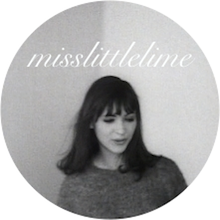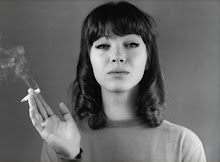

One of the greatest joy in New York is to see Bill Cunningham New York on the big screen. I was there early for 1:30pm monday screening at Film Forum, only to be surrounded by equally early, but much more elegantly dressed people. Most of them are old couples who are impeccably dressed in co-ordinated colour scheme, smiling and sipping coffee on the side. Oh dear tweed suits! I feel so at home.
The documentary itself is incredible - not only because its masterful filming by Richard Press, but because Bill Cunningham is such an enticing character - originally from Boston, he dropped out of Harvard, became hat-maker under the name 'William J.', started writing about fashion and introduced American readers to Jean-Paul Gaultier, started taking pictures on the streets and published by New York Times and many other influential publications, and lived in a tiny studio in Carnegie Hall surrounded by filing cabinets and 5 pieces of clothing - and on top of all these, became the first ever street fashion photographer.
Below is my favourite synopsis of the film (which was displayed in the cinema as a giant poster), by Carina Chocano - you cannot get a better description of this legendary, visionary octogenarian.
*
A few moments into the film “Bill Cunningham New York,” its subject — the legendary street-fashion photographer and society chronicler for The New York Times — is seen darting into the maw of Midtown traffic, unconcerned about the threat of death by taxi. Fast, intensely focused and apparently able to tune out all but the shot he’s after, Mr. Cunningham calls to mind a war photographer, which is an unlikely thing for an 82-year-old fashion photographer to call to mind.
Later in the film, however, Kim Hastreiter, the co-editor of Paper magazine and a frequent subject of Mr. Cunningham’s, makes the same observation. “He’ll do anything for the shot,” she says, as he runs into the street to get in front of a young woman in a sequined sheath. “I’ve been in deep conversations with him where he’ll just run from me because he sees someone.”
By this point in “Bill Cunningham New York,” Richard Press’s captivating and moving portrait of a singular man and a passing era, it’s possible to view what Mr. Cunningham does as the flip side of war photography, and not entirely unrelated. He seeks out and captures humanity amid the maelstrom of life, looking for what Harold Koda, chief curator at the Costume Institute at the Metropolitan Museum of Art, describes in the film as “ordinary people going about their lives, dressed in fascinating ways.” In these fleeting and otherwise unseen or unremarked moments, Mr. Cunningham finds something creative, life-affirming and free, and preserves it forever.
The film goes about its business just as its subject does — quietly, modestly, almost invisibly. Mr. Press and the cinematographer Tony Cenicola (a staff photographer for The Times) followed Mr. Cunningham around New York for two years, with no crew, tagging along to charity events and runway shows. They visited him in the lost-in-time world of the Carnegie Hall studios, where Mr. Cunningham and the 98-year-old photographer Editta Sherman, the last two residents on their floor, faced eviction after decades. Interspersing lively insights from Mr. Cunningham with affectionate stories from longtime friends and subjects — socialites, editors, models, eccentrics, dandies, avant-gardists, curators and neighbors — Mr. Press has created an intimate portrait that feels more found or captured than it does constructed.
To pay attention to Mr. Cunningham’s work, especially since his “On the Street” column became a multimedia slide show featuring his seemingly improvised commentary, is to sense that something sets him apart, that his work is animated not only by a refined eye but also by a worldview. With his raspy Yankee drawl, he sounds like Katharine Hepburn’s bon vivant cousin. But in one of the many contradictions that define him, his life is one of monastic solitude and simplicity.
He owns what look to be roughly five articles of clothing. (His signature piece is the same royal blue workman’s jacket worn by Parisian street sweepers, which sells for about $20 and comes in a plastic bag.) He favors $3 lunches. Until he moved, when Carnegie Hall reclaimed the artists’ residences there for other uses, he lived in a tiny studio with no kitchen and with a bathroom down the hall. He gets around on an old bicycle and sleeps on a cot surrounded by filing cabinets containing every negative of every shot he has ever taken. And yet somehow the patrician image is further burnished by the radical lifestyle. He’s an aesthete and an ascetic, a member of the establishment and a bohemian, and among the last of his kind.
In an essay in The New York Review of Books shortly after J. D. Salinger’s death, Michael Greenberg described Salinger’s characters as being what Tolstoy called “aristocrats of the spirit” whose “quest is for an almost impossible purity that drives them away from the workaday world, toward a dangerous, self-burying seclusion.” Mr. Cunningham could easily be the eighth Glass sibling, and the other seven would be glad to have him. He loves taking pictures of people in the rain because they “forget about you,” he says. “If they see you, they don’t go putting on airs, people are who they are.” When France names him a chevalier of the Order of Arts and Letters, he spends the time up to when he is about to receive the award snapping photos of the guests in attendance.
If the film suggests that there’s something bittersweet about a life dedicated to a single pursuit cultivated with an almost religious fervor, it also stands in awe of its subject’s seemingly inexhaustible, self-abnegating capacity to remain attuned to the expression of others.
“I’ve said many times that we all get dressed for Bill,” Anna Wintour, editor in chief of American Vogue, says in the film.
By staying at a distance from the objects of his obsession, Mr. Cunningham has molded himself into the designated noticer and interpreter of the city, a kind of Lorax of New York fashion.
“I don’t decide anything,” he says. “I let the street speak to me, and in order for the street to speak to you, you’ve got to stay out there and see what it is.”
*
I entered the theatre anticipating a film full of fun and fashion and frivolity, then came out in awe and admiration for Bill's vision and 'knock-your-socks-off' energy, but also more remarkably, remembering the values he upholds sternly, the way he strives to live painstakingly in solitude, and how he humbly accepts the Order of Arts in Paris, acclaiming that 'he who seeks beauty will find it'.
Bill, thanks for preserving and sharing with us the fleeting beauty you seek.
Further Reading:
Bill Cunningham on Wikipedia
On the Street on the New York Times (curated by Bill Cunningham weekly supplemented with pictures!)
Bill on Bill on New York Times (his autobiographical account)
Capturing the Elusive Bill Cunningham on New York Times
Luther and Cunningham Honored by France on WWDMedia






3 commentaires:
How wonderful that you got to see this film right in New York itself!
So glad you liked it, I can't wait to see it !!!
I can't wait to see it!
http://herribbonsandherbows.blogspot.com/
Enregistrer un commentaire